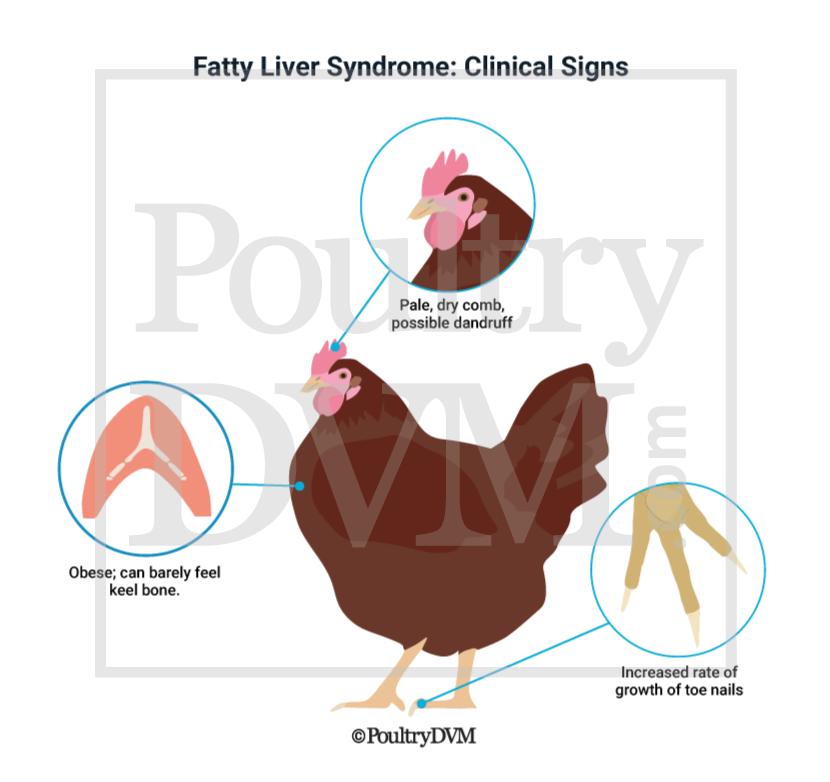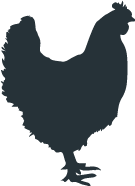Veterinary advice should be sought from your local veterinarian before applying any treatment or vaccine. Not sure who to use? Look up veterinarians who specialize in poultry using our directory listing. Find me a Vet
Other Names: Hepatic Steatosis, Fatty Liver Haemorrhagic Syndrome, FLHS

| Name | Summary | |
|---|---|---|
| Supportive care | Isolate the bird from the flock and place in a safe, comfortable, warm location (your own chicken "intensive care unit") with easy access to water and food. Limit stress. Call your veterinarian. | |
| Milk thistle (Silybum marianum) | 400 mg/kg of feed helps provide liver protection. | S Romanelli et al., 2016; M Saeed et al., 2017; A Baradaran et al., 2019 |
| Genistein | 40-400 mg/kg diet significantly decreased the serum ALT, creatinine, triglyceride (TG), total cholesterol (TC), and free fatty acid (FFA) levels, resulting in alleviation of metabolic disorder and inflammatory responses in FLS hens. | Z Lv et al., 2018 |
| Flax | Feeding supplemental flaxseed, flax oil, or Omega 3 fatty acids helped attenuate the progression of FLS in hens. | J Davis et al., 2016; G Masterton et al., 2010 |
| Bai Zhu (Atractylodes macrocephala Koidz) | When added to the diet of laying hens at 200-400 mg/kg, one study found that it helped ameliorate liver injury through regulating activities of antioxidant enzymes and hepatic lipid metabolism. | Y Miao et al., 2021 |
| Resveratrol | 400 mg/kg effectively attenuates oxidative stress and inflammation in hens with fatty liver syndrome | X Wang et al., 2019; M Rubio-Ruiz et al., 2019; C Xing et al., 2020 |
| Lycopene | When added to the diet of laying hens at 20-80 mg/kg it can help regulate fat metabolism in hens and mice. | H Tian et al., 2020; N Yinhua et al., 2020 |

| Winter | Spring | Summer | Autumn |
© 2026 PoultryDVM All Rights Reserved.